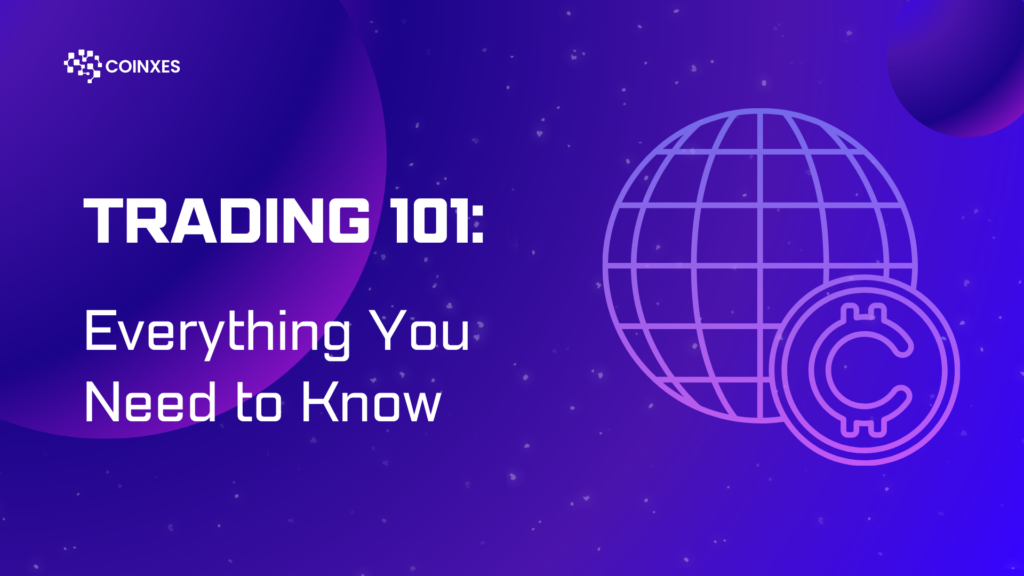Trading 101: Everything You Need to Know
Introduction to Trading
Trading is the process of buying and selling financial assets to generate profits. It has evolved significantly with technological advancements, allowing traders to engage in various markets, such as forex, stocks, and cryptocurrencies. Unlike investing, which focuses on long-term growth, trading aims to capitalize on short-term price movements.
Key Trading Markets
Forex Trading
Forex trading (foreign exchange) involves the buying and selling of currency pairs like EUR/USD or GBP/JPY. It is the largest and most liquid financial market, operating 24/5, with traders speculating on currency value fluctuations.
Stock Trading
Stock trading involves purchasing and selling shares of publicly listed companies. Investors analyze company performance, market trends, and economic conditions to predict stock price movements.
Crypto Trading
Crypto trading focuses on digital assets like Bitcoin and Ethereum. Unlike forex or stocks, cryptocurrencies operate 24/7, offering high volatility and opportunities for traders to profit from price swings.
Essential Trading Platforms
TradingView and Its Features
TradingView is a powerful charting platform that provides traders with analytical tools, social features, and market insights. It offers advanced TradingView charts and integrations with brokers for executing trades directly from the platform.
TradingView Deriv
A specialized integration, TradingView Deriv, enables traders to analyze and execute trades on Deriv, a broker that supports forex, crypto, and synthetic indices trading.
MT4 vs. MT5: Choosing the Right MetaTrader
MetaTrader 4 (MT4) vs. MetaTrader 5 (MT5) is a common debate among traders. MT4 is best suited for forex trading due to its simplicity, while MT5 offers additional features like more timeframes, built-in economic calendars, and support for different asset classes.
Understanding Trading Strategies
Day Trading
Day trading involves executing multiple trades within a single day. Traders analyze short-term price movements and take advantage of volatility to profit from quick trades.
Swing Trading
Swing trading focuses on medium-term price swings, with traders holding positions for days or weeks. It combines technical and fundamental analysis to identify trends.
Intraday Trading
Intraday trading is similar to day trading but emphasizes smaller, frequent trades throughout the day. It requires fast decision-making and precise market timing.
Copy Trading
Copy trading allows beginners to replicate the trades of experienced traders. This strategy minimizes the learning curve and provides exposure to professional trading techniques.
The Role of Candlestick Patterns and Technical Analysis
Understanding Candles in a Trading Chart
Candlesticks visually represent price movements over a specified period. A trading chart uses different candlestick patterns to indicate market trends and potential reversals.
Common Candlestick Formations
- Doji: Signals market indecision and potential reversals.
- Hammer and Inverted Hammer: Indicate potential bullish reversals in a downtrend.
- Shooting Star: Suggests a bearish reversal after an uptrend.
- Engulfing Pattern: Shows strong momentum in either direction.
Technical Indicators for Trading Success
Traders use tools like Moving Averages, RSI (Relative Strength Index), and Bollinger Bands to analyze market trends and confirm trading decisions.
Best Practices for Online Trading
Risk Management Strategies
- Use stop-loss orders to limit potential losses.
- Set realistic profit targets and manage leverage effectively.
- Diversify across different markets to minimize risk.
Trading Psychology and Emotional Discipline
- Stay objective and avoid impulsive trades driven by emotions.
- Keep a trading journal to track progress and refine strategies.
- Accept losses as part of the learning process.
Common Mistakes to Avoid
- Overtrading without a clear strategy.
- Ignoring risk management techniques.
- Failing to stay updated on market trends and economic events.
Conclusion
Trading presents lucrative opportunities but requires discipline, strategy, and continuous learning. Whether engaging in forex trading, crypto trading, or stock trading, leveraging the right trading platforms and analytical tools can enhance trading success. By following best practices and managing risk, traders can develop a consistent approach to navigating financial markets effectively.
FAQs
- What is the best trading platform for beginners?
TradingView is excellent for analysis, while MT4 is widely preferred for forex trading due to its simplicity. - Is day trading profitable?
Yes, but it requires experience, strategy, and strong risk management to be consistently successful. - How do candlestick patterns help in trading?
Candlestick patterns provide insights into market trends and potential price reversals, helping traders make informed decisions. - What is the difference between swing trading and day trading?
Swing trading holds positions for several days or weeks, while day trading focuses on quick trades within the same day. - Can I trade crypto on TradingView?
Yes, TradingView supports cryptocurrency market analysis and integrates with several crypto exchanges.Follow us:
